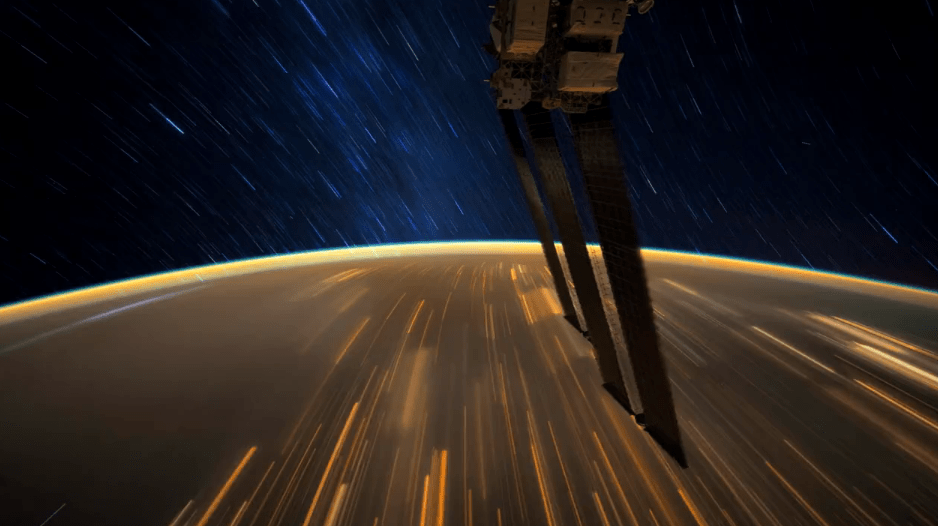If you’ve watched any Ren and Stimpy cartoons, you know that one of the greatest hazards of spaceflight is “space madness”. Only exposure to the isolation and all pervasive radiation of deep space could drive an animated chihuahua into such a state of lunacy.
What will happen if they press the history eraser button? Maybe something good? Maybe something bad? I guess, we’ll never know.
Of course, Ren and Stimpy weren’t the first fictionalized account of people losing their marbles when they fly into the inky darkness of space. There were the Reavers from Firefly, that crazy Russian cosmonaut in Armageddon, almost everyone in the movie Sunshine, and it was the problem in every second episode of Star Trek.

According to movies and television, if you’ve got space madness, you and your crewmates are in for a rough ride. If you’re lucky, you merely hallucinate those familiar space sirens, begging you to take off your space helmet and join them for eternity on that asteroid over there.
But you’re just as likely to go homicidal, turning on your crewmates, killing them one by one as a dark sacrifice to the black hole that powers your ship’s stardrive. And whatever you do, don’t stare too long at that pulsar, with its hypnotic, rhythmic pulse. The isolation, the alien psycho-waves, dark whisperings from eldritch gods speak to you though the paper-thin membrane of sanity. If we go to space, does only madness await us?
If you’ve spent any time around human beings, you know that we’ve got our share of mental disease right here on Earth. You don’t have to travel to space to suffer depression, anxiety, and other mental disorders.
Once we’re in orbit, or prancing about on the surface, of Mars, we’re going to experience our share of human physical and mental frailties. We’re going to take our basic humanity to space, including our brains.
According to the National Institute of Mental Health, 18% of the US population, or 40 million Americans suffer from some variety of anxiety-related disorder. 6.7% of adults had a major, crippling depressive episode over the course of a year.
Unless we improve treatment outcomes for mental disorders here on Earth, we can expect to see similar outcomes in space. Especially once we make exploration a little safer, and we’re not concerned with our immediate exposure to the vacuum of space. But will going to space make things worse?

NASA has carried out two studies on astronaut psychological health studies. One for the cosmonauts and astronauts on the Mir space station, and a second study for the folks on the International Space Station. They tested both the folks in space as well as their ground support staff once a week, to see how they were doing.
Although they reported some tension, there was no loss in mood or group cohesion during the mission. The crews had better cohesion when they had an effective leader on board.
Isolation working in close quarters has been heavily studied here on Earth, with submarine crews and isolated groups at research bases in Antarctica.

Earlier this year, a crew of simulated Mars astronauts emerged, unharmed from a year-long isolation experiment in Hawaii. The six international crewmembers were part of the Hawaii Space Exploration Analog and Simulation experiment, to see what would happen to potential Mars explorers, stuff on the surface of the red planet for a year.
They couldn’t leave their 110 square-meter (1,200 square-foot) habitat without a spacesuit on. What did they report? Mostly boredom. Some interpersonal issues. Now that they’re out, some are good friends, and others probably won’t stay in contact, or pay too much attention to them in their Facebook feed.
The bottom line is that it doesn’t seem like there’s too much of a risk from the isolation and close quarters. Well, nothing that we’re not used to dealing with as human beings.
But there is another problem that has revealed itself, and might be much more severe: space dementia. And we’re not talking about the song from Muse.
According to researchers from the University of California, Irvine, long term exposure to the radiation of deep space will cause significant damage to our fragile human brains. Or at least, that’s what happened to a group of rats bathed in radiation at the NASA Space Radiation Laboratory at New York’s Brookhaven National Laboratory.
Over time, the damage to their brains would cause astronauts to experience a type of dementia that causes anxiety. Brain cancer patients who receive radiation treatment are prone to this as well.

During the months and years of a Mars mission, astronauts would take a large dose of radiation, even with shielding, and the effects would be harmful to their bodies and to their brains. In fact, even when the astronauts return to Earth, their condition might worsen, with more anxiety, depression, memory problems, and a loss of decision making ability. This is a serious problem that needs to be solved if humans are going to live for a long time outside the Earth’s protective magnetosphere.
It turns out, science fiction space madness isn’t a real thing, it’s a plot device like warp drives, teleporters, and light sabers.
Isolation and close proximity isn’t much of a problem, we’ve dealt with it before, and we can still work with people, even though we hate them and the way they slurp their coffee, and lean back on their chair, even though that thing is totally going to break and they’re going to hurt themselves. And they won’t stop doing it, no matter how many times we ask them to stop.
Once again, radiation in space is a big problem. It’s out there, it’s everywhere, and we don’t have a great way to protect against it. Especially when it wrecks our brains.


